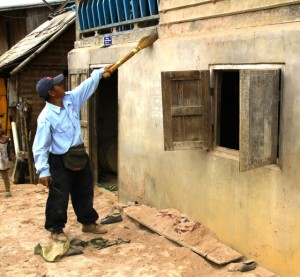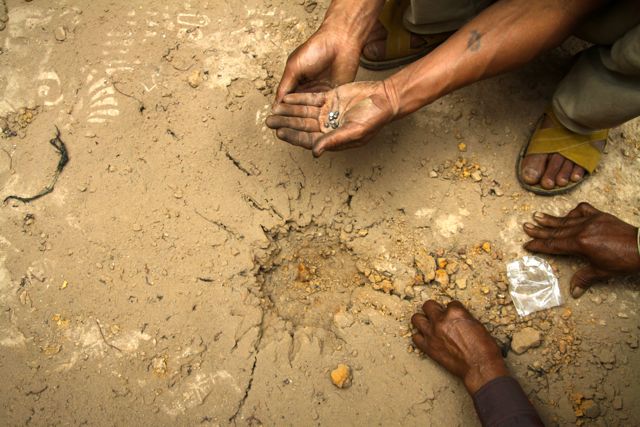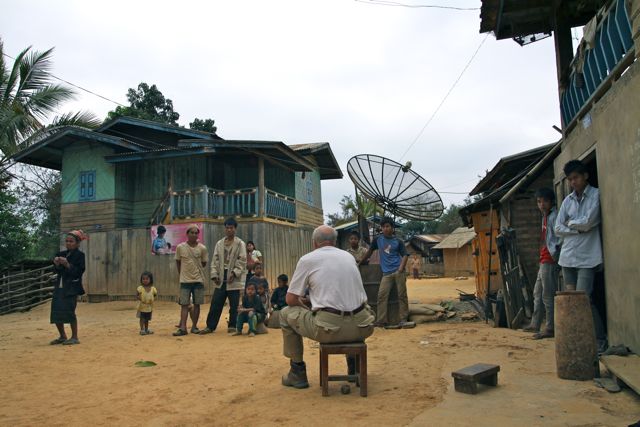Project Phongsali 2011: A bomblet too dangerous to move. We had to destroy it right there in the middle of the village. But first…
Day Thirty-Eight:
Today we stopped in a village to drop off several bomb casings that we recently cleaned of boosters, fuses, and remnants of high explosive. Returning casings helps us to build trust among the villagers. We enjoy proving wrong the cynics who predict that our team will disappear with the casings, sell them as scrap, and keep the profit for ourselves.
Today, as we were palavering with villagers, killing a little time before lunch, an old man approached with a grandchild on his back and a cluster bomblet in his hand. He asked Yai if our team was taking on bombies.
Yai’s always been proficient in awkward situations. Speaking softly, he got the man to gently lay the bomblet on the ground at our feet. Then, we immediately cleared the area of villagers. (A BLU 26 has an effective killing zone of about thirty yards, but people have been killed a hundred yards away.)
Yai explained to those who witnessed the delivery: “Just because a bomblet doesn’t explode the first time you move it, doesn’t mean it won’t kill you the next time. Bombs don’t get safer when they’re tampered with, they get more dangerous”.
Vilasak announced that the bomblet would have to be demolished right where it lay, about six feet from the front door of a house. Then, like a shot, he and the team were off to fill sandbags that we’d need to contain the coming explosion.
Not wanting to dig sand on a hot day, I volunteered for the light duty of guarding the bombie and preventing anyone from tampering with it while the team was gone.
It was an easy job at first. The adults, having heard Yai’s lecture about temperamental bomblets, remained a safe distance away. The children were more wary of me than they were of the bomb and had no inclination to come close. For once I appreciated the scolding that Lao parents often give their children: “If you aren’t good, the falang will eat you!”
What I hadn’t reckoned on was the robust curiosity of chickens, pigs and dogs. I discovered that I couldn’t take my eyes off that bomblet for a minute without some barnyard critter coming to take a peek or a peck. (Pigs were the most persistent. But then… a bombie does somewhat resemble a piece of fruit!) In the end, I had to park a stool over the bomblet and position myself so I could freely kick at nosey animals without accidentally punting the bomblet.

It only seems correct that, after a demolition inside of a village, we help people clean up the site of the blast. Its tempting to hurry on to other tasks but we owe our good reputation to the time we invest in forging friendships.
We like to leave a neat demolition site, so we borrowed brooms and swept away the sand and dirt that we’d blasted onto nearby houses. As we tided up, knowledgable villagers sifted through soil in the small crater created by the blast, hoping to find some of the 300 ball bearings that were propelled from the bomblet as it exploded. Those small steel balls are valued by hunters who use them as shot in their muzzleloaders.


